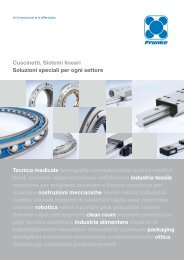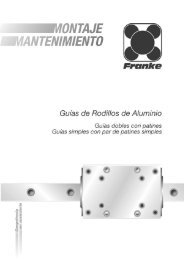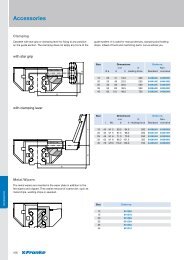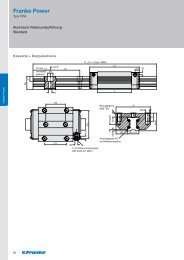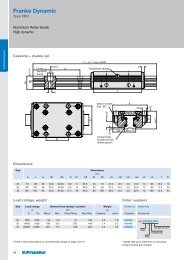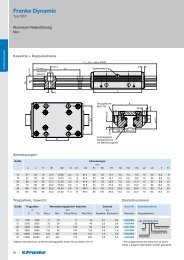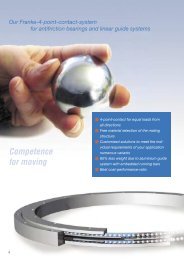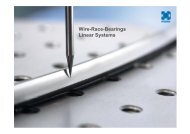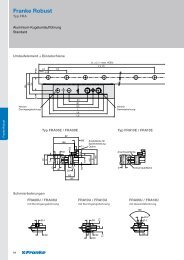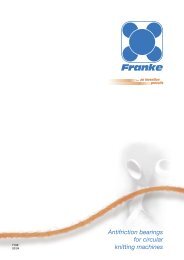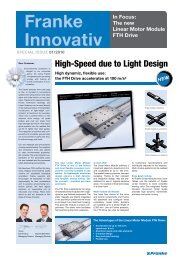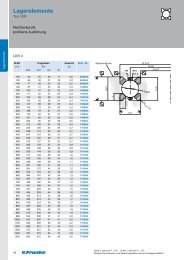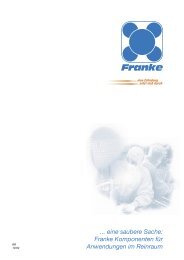Antifriction Bearings Linear Systems - Franke GmbH
Antifriction Bearings Linear Systems - Franke GmbH
Antifriction Bearings Linear Systems - Franke GmbH
Create successful ePaper yourself
Turn your PDF publications into a flip-book with our unique Google optimized e-Paper software.
3.7 Running Accuracy and Stiffness<br />
µm<br />
100<br />
90<br />
80<br />
70<br />
60<br />
50<br />
40<br />
30<br />
20<br />
10<br />
0<br />
Degree<br />
1.0<br />
0.9<br />
0.8<br />
0.7<br />
0.6<br />
0.5<br />
0.4<br />
0.3<br />
0.2<br />
0.1<br />
0<br />
Degree<br />
12<br />
20<br />
15<br />
<strong>Franke</strong> Dynamic running accuracy over 1 m<br />
FDB, FDG<br />
FDA, FDC,<br />
FDD, FDE<br />
FDH<br />
12 15 20 25 35 45 Size<br />
25<br />
Stiffness on the X-axis: FDA, FDC, FDD, FDE, FDH<br />
35<br />
100 200 300 400 500 600 700 800 Nm<br />
45<br />
Stiffness on the X-axis: FDB, FDG<br />
0.150<br />
0.135<br />
0.120<br />
35<br />
0.105 25<br />
0.090<br />
20<br />
15<br />
0.075<br />
0.060<br />
12<br />
0.045<br />
0.030<br />
0.015<br />
45<br />
0<br />
10 20 30 40 50 60 70 80 Nm<br />
Type FP – <strong>Franke</strong> Power<br />
1 Designs and System Description<br />
<strong>Franke</strong> <strong>Linear</strong> Guides of the type FPA comprise double rails<br />
with cassette (see illustration 1). The cassette has integrated<br />
recirculating rollers for high load ratings and stiffness. The rails<br />
of the type FPA are interchangeable with the rails of the <strong>Franke</strong><br />
Aluminium Roller Guide.<br />
Illustration 1: Recirculating Roller Guide<br />
<strong>Franke</strong> Recirculating Roller Guides are available in one preload<br />
class. Traverse speeds of 3 m/s and accelerations of 30 m/s²<br />
are possible. The operating temperature of the guides lies<br />
between –20 °C and +80 °C.<br />
2 Dimensioning the Guides<br />
The following parameters are needed for correct dimensioning<br />
of the guide:<br />
• Selection of formation (see illustration 2)<br />
• All invasive or emerging forces / torques (dynamic / static)<br />
• Type of load (stationary, swelling, changing)<br />
• Environmental influences (e.g. temperature, moisture) or<br />
special operating conditions (e.g. clean room, vacuum)<br />
• Traverse speed and acceleration<br />
• Stroke length<br />
• Target lifetime in km<br />
Illustration 2: Overview Formations<br />
109<br />
Technical Information



